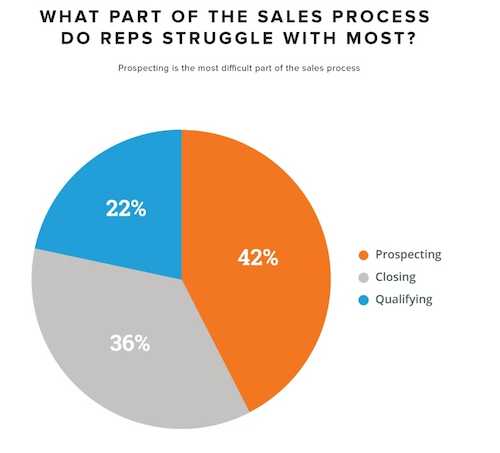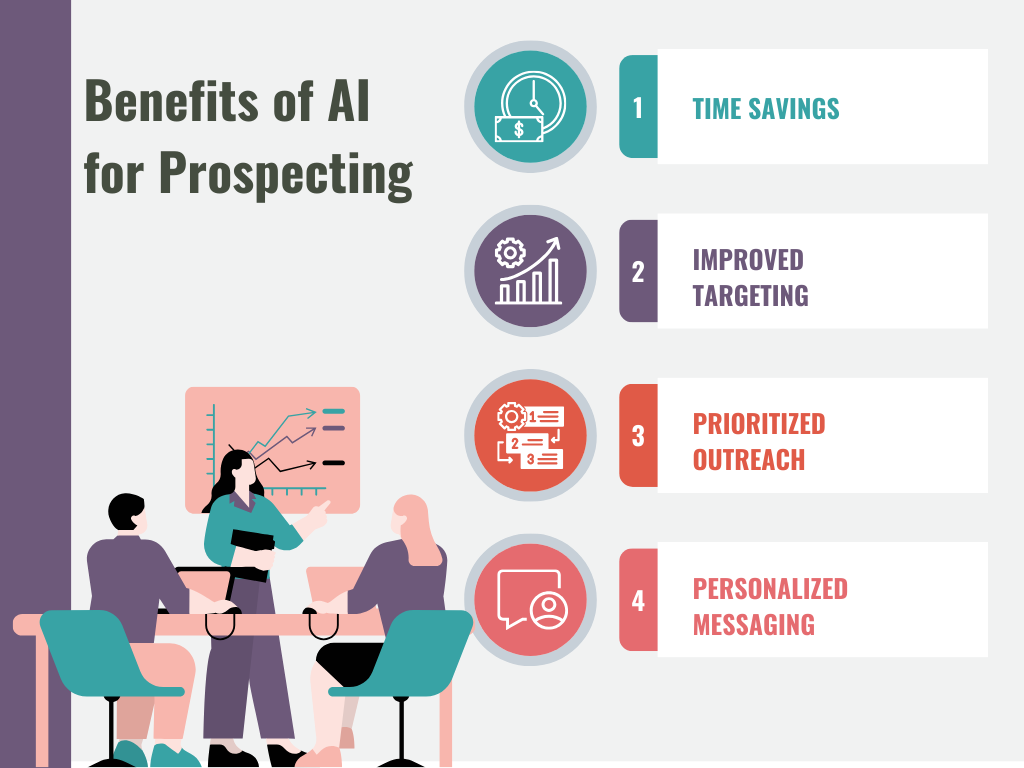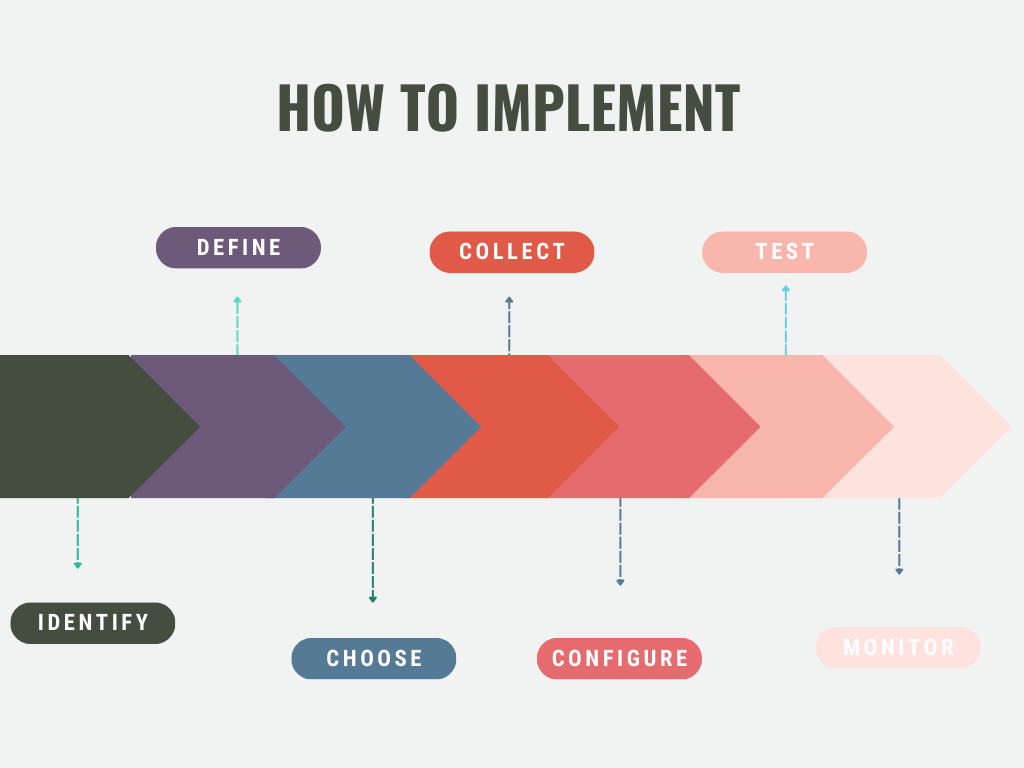Table of Contents:
- The Traditional Sales Prospecting Problems
- What is AI for Sales Prospecting?
- Understanding the Different Types of Sales Prospecting
- The Benefits of Using AI for Sales Prospecting
- How AI Powers Targeted, Efficient Sales Prospecting
- Implement AI-powered Sales Prospecting in Your Sales Strategy
Introduction
So you want to up your sales game and start closing more deals. One of the best ways to boost your pipeline and find high-quality leads is with AI for sales prospecting.
AI or artificial intelligence uses machine learning algorithms to help you identify the most promising prospects to focus your efforts.
AI is fundamentally changing the sales landscape, making traditional prospecting tactics obsolete and enabling businesses to engage leads more effectively.
In this article, we’re going to walk you through everything you need to know about using AI for sales prospecting, from the different types of prospecting and how AI helps with each one to the major benefits of AI and how to get started.
By the end, you’ll be armed with the knowledge and tools to take your prospecting to the next level and start crushing your sales targets.
The Traditional Sales Prospecting Problems
Before diving into the AI solution, it's essential to understand the challenges sales teams face in traditional prospecting.
Some of these pain points include:
- Inefficiencies: Manual prospecting is time-consuming and requires significant effort in researching, segmenting, and prioritizing leads.
- Data Overload: The sheer amount of data that sales reps must sift through to find qualified leads can be overwhelming, leading to missed opportunities.
- Ineffective Outreach: Templated messages can come off as impersonal, which reduces the chance of generating quality prospects.
So, how can AI address these issues in sales prospecting? Let's explore the benefits of AI-powered prospecting.

What is AI for Sales Prospecting?
AI prospecting tools use machine learning algorithms to analyze huge amounts of data to identify high-quality leads.
The AI examines data like company websites, social media, news reports, and industry reports to determine good prospects for your product or service.
AI can evaluate thousands of potential prospects and provide you with a prioritized shortlist of the best leads to pursue based on fit, need, and timing.
It goes beyond manual methods of gathering and analyzing data on potential clients, saving businesses both time and resources and significantly increasing the probability of conversion.
Understanding the Different Types of Sales Prospecting
Sales Prospecting is the process of searching for potential customers, clients, or buyers in order to develop new business. Here are the key types:
- Cold Calling: This traditional method involves reaching out to potential customers who have had no previous contact with the salesperson.
- Warm Calling: This refers to contacting prospects who have had prior interaction with the organization or sales representative.
- Social Selling: This modern approach involves tapping into social networks to find and engage potential customers.
- Email Prospecting: A method where salespeople reach out to prospects through personalized emails.
- Event Prospecting: Salespeople network at events, seminars, and trade shows to find potential customers.
AI for sales prospecting can benefit all the types mentioned above, but it particularly excels in areas like social selling and email prospecting where large data sets are common.
The Benefits of Using AI for Sales Prospecting
Using AI for sales prospecting can save time and boost productivity. Instead of spending hours researching and cold-calling leads that may never pan out, AI tools can help focus your efforts on the most promising prospects.
AI-powered prospecting leverages machine learning algorithms that analyze huge amounts of data to identify patterns and insights.
The AI reviews information like company attributes, technologies used, hiring trends, investments, and more to determine the prospects with the highest propensity to buy.
This allows sales reps to skip the guesswork and outreach to dead ends.
Some of the key benefits of AI for prospecting include:

Time savings
33% of marketers said that the top benefit of using AI is how much time it saves.
AI can filter through massive amounts of data to find the most viable leads. This reduces the time spent on research and trial-and-error outreach.
Sales reps can then focus their time and energy on the most promising prospects.
Improved targeting
AI uses predictive analytics to determine the prospects that match your ideal customer profile.
It can identify companies that have a higher likelihood of needing your product or service based on attributes like growth, new funding, job postings, and technology infrastructure.
This precision targeting improves the quality of leads and conversion rates.
Prioritized outreach
AI prospecting tools score and rank leads so you can contact the most promising ones first.
They analyze factors like technographic data, buying signals, firmographic information, and intent data to determine lead priority.
Starting with the highest potential leads translates into higher sales productivity and faster deal velocity.
Personalized messaging
Some AI tools can recommend personalized messaging for each lead.
They may suggest specific pain points, use cases, or business challenges to address based on what they know about the prospect. Personalized outreach is much more likely to resonate and prompt a response.
Using AI to enhance your prospecting efforts can make sales reps far more efficient and effective.
The time savings, improved targeting, prioritized outreach, and personalized messaging all contribute to higher conversion rates and accelerated sales cycles.
How AI Powers Targeted, Efficient Sales Prospecting

How does AI for sales prospecting work? AI prospecting tools are software programs that leverage large amounts of data and predictive analytics to determine which companies and contacts are the most promising prospects.
The AI analyzes digital data to identify prospects that match your ideal customer profile and are demonstrating signs of an emerging need.
It provides insights to help you focus your prospecting efforts on the leads most likely to become customers.
By integrating AI into your sales efforts, you can drastically increase the effectiveness of your prospecting process in the following ways:
Data Analysis and Segmentation
AI algorithms can analyze vast amounts of data faster than a human ever could.
The technology sifts through heaps of information, identifies useful patterns and trends, and segments prospects based on specific criteria determined by the sales team.
This results in a more refined list of leads to target and enables sales reps to prioritize their efforts.
Predictive Lead Scoring
Predictive lead scoring ranks leads based on their likelihood to convert, by analyzing historical customer data, demographics, and behavioral patterns.
Sales reps can focus on the high-scoring leads, which have a higher probability of conversion.
Personalized Outreach
AI-powered tools can help sales reps craft tailored email and social media messages, increasing the likelihood of resonating with the recipient.
AI can mine through large amounts of data (including social media activity and engagement history) to identify the preferences, pain points, and interests of individual prospects.
With this personalization, sales reps can deliver a message that speaks directly to their target audience.
Enhanced CRM Integration
AI can seamlessly integrate with CRM systems and use data to create a more holistic view of each lead.
This integration enables the AI platform to deliver accurate and insightful recommendations for engaging leads, based on historical customer interactions and success metrics.
Automating Follow-ups and Scheduling
By analyzing response patterns and preferences of the prospect, AI can automate follow-up messages and schedule calls or demos.
AI-chatbots can also handle initial sales touchpoints, freeing up time for sales reps to focus on high-value prospects.
Implement AI-powered Sales Prospecting in Your Sales Strategy
Here's a step-by-step guide to implement AI for sales prospecting in your business:

Step 1: Identify AI Applications in Your Sales Process
Before delving into AI implementation, assess your sales process and identify the aspects that can benefit from AI technology:
- Lead generation: AI algorithms can mine and analyze large datasets from multiple sources to identify potential prospects.
- Lead scoring: AI can prioritize leads by evaluating prospect data points and ranking them based on their likelihood to convert.
- Personalization: AI can analyze data on prospects' preferences, behavior, and past interactions to create customized messages and offers.
- Engagement and follow-ups: AI-driven chatbots and virtual assistants can engage with prospects, answer questions, and schedule follow-up communications.
- Analytics: AI tools can predict outcomes and provide insights to optimize sales strategies.
Step 2: Define Your Goals
Alright, you're now aware of how AI can help. But before implementing an AI tool, establish clear objectives. What do you hope to achieve?
This might include shortening sales cycles, increasing conversion rates, or enhancing customer relationships. Defining your goals will guide your AI selection and training processes.
Step 3: Choose the Right AI Tool
There are many AI tools available on the market today, each with its distinctive features and capabilities.
A few examples include Sanka, Salesforce Einstein, Conversica, and Marketo. Find a tool that aligns with your business needs and objectives.
Consider the following factors when selecting your AI tool:
- Compatibility: Confirm that the AI tool can integrate seamlessly with your existing CRM or sales software.
- Features: Choose the tool that offers features specifically aimed at your identified goals.
- Scalability: Ensure that the AI tool is capable of handling your business growth and adapting to future requirements.
- Usability: Prioritize AI tools with intuitive interfaces, ease of use, and solid support resources.
- Pricing: Balance features with affordability to guarantee a valuable return on investment.
Step 4: Collect and Organize Your Data
AI thrives on data. The more relevant and high-quality data you feed to your AI tool, the better it can learn and deliver accurate results.
Collect clean, up-to-date prospect data, and ensure it’s properly categorized and labeled.
For optimal AI performance, gather clean, up-to-date prospect data and ensure it is well-organized:
- Data sources: Collect data from diverse sources, such as website analytics, email campaigns, CRM systems, social media, and public databases.
- Data quality: Remove duplicate, outdated, or irrelevant records to ensure data quality.
- Data labeling: Label and categorize data attributes to simplify the configuration and training processes.
Step 5: Configure and Train Your AI Model
Using your organized data, train your AI model. Many AI tools available today feature user-friendly interfaces that simplify the configuration process.
During this stage, the model learns to make predictions by identifying patterns in the data.
- Input data: Input your well-organized data into the AI model for analysis.
- Set parameters: Configure the AI tool to align with your goals and criteria.
- Model training: Allow the AI model to learn patterns and relationships from the input data, thereby enhancing its predictive abilities.
Step 6: Test and Refine Your AI Model
Before implementing the AI system into your sales process, test its abilities. This often involves using a smaller, separate dataset and measuring the model’s predictions against actual outcomes.
Following the model's training, evaluate its performance:
- Validation: Use a separate validation dataset and assess the model's predictions against real outcomes to determine its accuracy.
- Refinement: If needed, adjust the model's parameters and retrain to enhance its prediction accuracy. Repeat this process until satisfied with its performance.
- Final test: Run a final test using the refined model and evaluate it based on your predefined goals.
Step 7: Implement the AI Tool and Monitor its Performance
Once the AI system has been trained and tested, it's ready to be implemented into your sales process. Regularly monitor and assess its performance against your objectives to ensure it’s delivering the desired results. Analyzing occasional failures can lead to improved performance over time.
- Integration: Seamlessly integrate your AI tool with your sales process and CRM system.
- Performance monitoring: Regularly track and assess its performance against your objectives.
- Continuous improvement: Analyze occasional failures to learn from them and adjust the model for even better performance over time.
Wrapping Up
AI and automation are transforming sales prospecting and making the process faster, smarter, and more effective.
With AI, you can identify high-quality leads, engage the right prospects at the right time, and gain valuable insights to boost your sales productivity.
The key is finding the right AI tools, integrating them into your workflow, and leveraging the power of data and algorithms.
If you want to save time, increase the volume and quality of your prospects, and ultimately close more deals, AI is the way to go.
The future of sales prospecting is automated and intelligent.
Stay ahead of the curve and streamline your prospecting process by incorporating AI into your sales strategy today.








